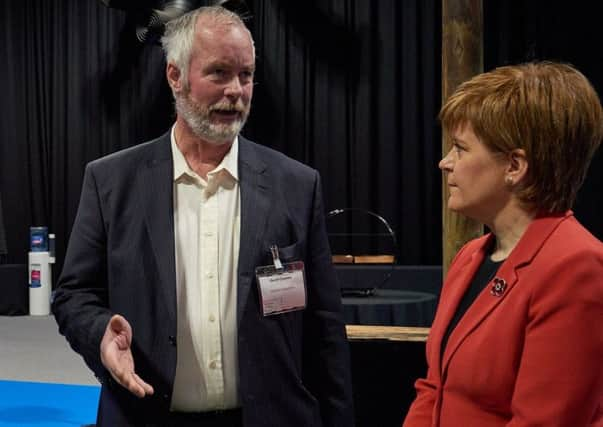Cumbernauld businessman's 20-year crusade to extend the life of crash barriers could save the country millions


They perform a vital role but, rather like electricity pylons, are so ubiquitous that most of us never give them a passing thought.
Unless, that is, you are businessman Geoff Crowley.
He has spent the last 20 years thinking about motorway crash barriers and how to stop the waste that occurs when the rust sets in and they are scrapped.
Advertisement
Hide AdAdvertisement
Hide AdHis company, Highland Galvanisers, is pioneering a new way of extending the lifespan of these essential pieces of infrastructure, preventing significant waste and potentially making huge savings to the public purse.
Made of steel, the barriers, or ‘vehicle restraint system’ as they are officially known, begin life with a protective galvanized coating of zinc alloy to prevent rust.
This coating lasts between 25 and 30 years on the roadside, where it slowly oxidizes until all the zinc disappears, exposing the steel – at which point the barrier needs to be replaced.
Now they don’t, though, thanks to Geoff and his team at Highland Galvanizers.
Advertisement
Hide AdAdvertisement
Hide AdThe company, which was established in 1978 and employs over 100 people across two sites in Elgin and Cumbernauld, has pioneered a way of re-coating the barriers before the rust sets in, so the steel is preserved and can remain in use for another 25 years.
By extending the lifespan of the crash barriers through re-use and refurbishment, the process embodies a key circular economy principle: the need to keep the things we need in productive use for as long as possible.
Geoff said: “Galvanizing is the most cost-effective corrosion protection for steel, with corrosion currently costing the UK four per cent of GDP – as old barriers are scrapped and new ones made. There’s a massive 89 per cent reduction in CO2 emissions by recoating the steel rather than scrapping and replacing it.”
The re-coated steel has the same strength and safety properties as a new barrier.
Advertisement
Hide AdAdvertisement
Hide AdAnd due to an inspection and assessment programme, and the ability to replace damaged barriers from a stock of re-coated ones, the infrastructure of the Scottish road network will be improved along the way too.
The programme will also generate CO2 savings due to a reduced need to buy imported steel for new barriers.
However, persuading others to move to a more circular mindset has been quite a long road.
Geoff said: “It has taken more than four years, with many meetings and presentations backed by a regime of testing and proving, to finally get the green light to put this new approach into action, with test areas and now a large-scale trial.”
Advertisement
Hide AdAdvertisement
Hide AdHowever, Highland Galvanisers have made a big breakthrough, with Transport Scotland backing a regional trial.
Now taking place on barriers in the south east of Scotland, it has the potential to roll out across the country.
Geoff said: “We’ve calculated there are huge savings to be made if this new circular economy-inspired system is adopted across the whole network, both financially and in terms of CO2.”
For other businesses looking to pursue circular economy projects, there are lessons to be learned from Geoff’s experience.
Advertisement
Hide AdAdvertisement
Hide AdHe said: “I would say perseverance is probably the most important thing when you are trying to introduce a circular concept that is likely to be completely new.
“People generally have quite a strong resistance to change, which can be off-putting, but you need to just keep going.”
Geoff’s other top tip for circular economy SMEs is to find an internal champion.
He said: “Identify someone who is receptive to your idea in the organisation you need to reach.
Advertisement
Hide AdAdvertisement
Hide Ad“Our champion was a key contractor to Transport Scotland who was able to give us an insight into how best to approach decision-makers.
“It’s also important to strike a balance between giving your prospect enough time to consider your idea, keeping in touch so they don’t forget you while being careful not to hound them, which is usually counter-productive.”
And be careful to see it from their perspective.
Geoff added: “What you and your prospective client think might not be the same.
“While financial savings are always important, other benefits, such as CO2 emission reductions, could be the thing that drives their thinking.”